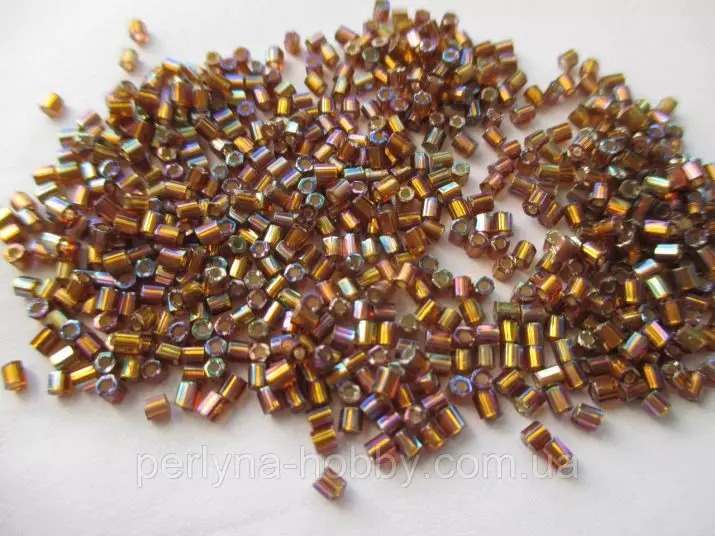The Japanese bead does not have such a long-standing history as Czech. In the rising sun in the country, glass beads have become quite recently - in the 40s of the XX century. The most advanced technologies and the best traditions for the manufacture of glass The Japanese began to apply when creating their own product.
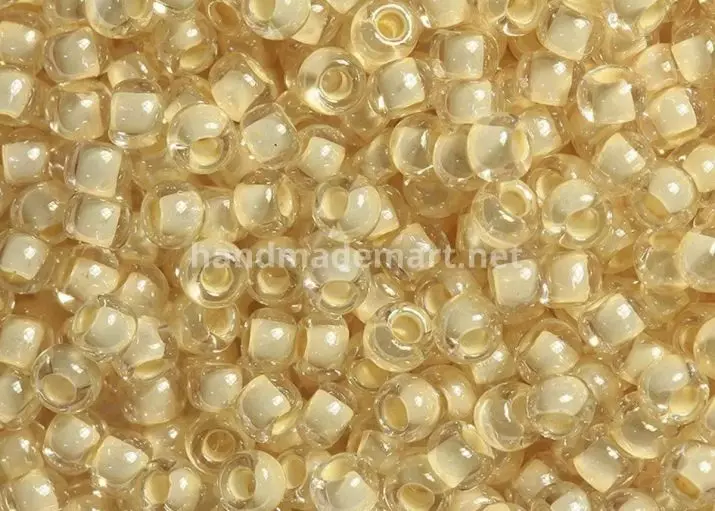
Peculiarities
High quality, diverse assortment and durability - it highlights Japanese beads among other products, it is considered better than Czech. Very smooth - a bead to beerinka, durable, with a steady coating, beautiful flowers and unusual shades. Products made from such material are accurate, the lines when weaving are lowered exactly, it looks aesthetic and luxurious. Jewelry and other accessories from such beads can be compared with jewelry.
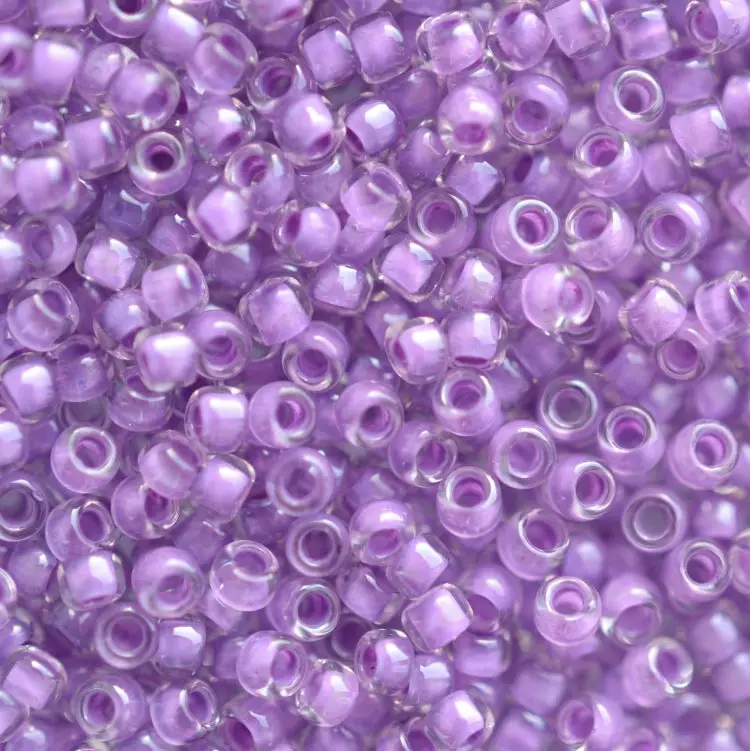
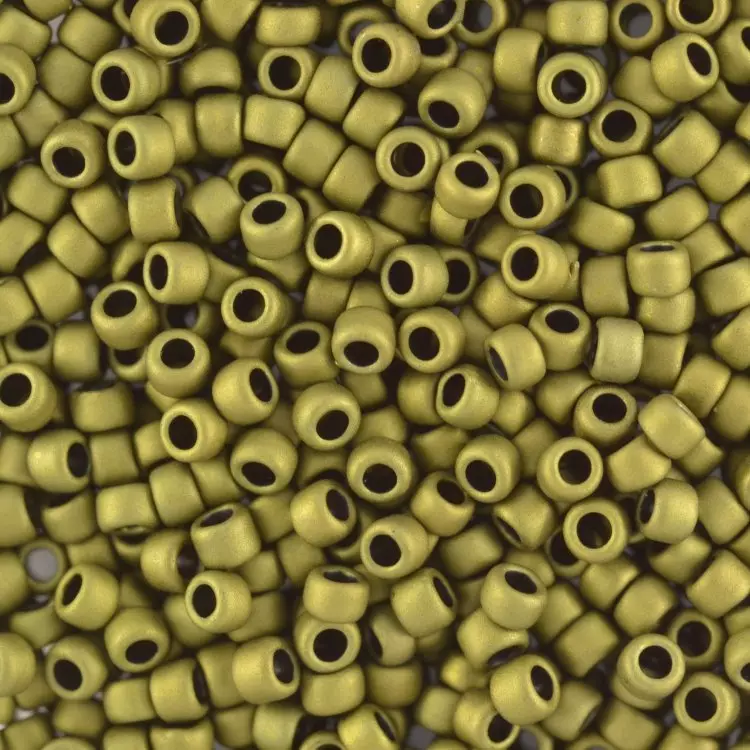
Advantages of the Japanese Bead:
- accurate size (articles do not change);
- wide holes;
- the edges are smooth;
- easy by weight;
- protective coating from the inside and outside;
- lack of marriage;
- A variety of shapes, sizes, shades and types of spraying.

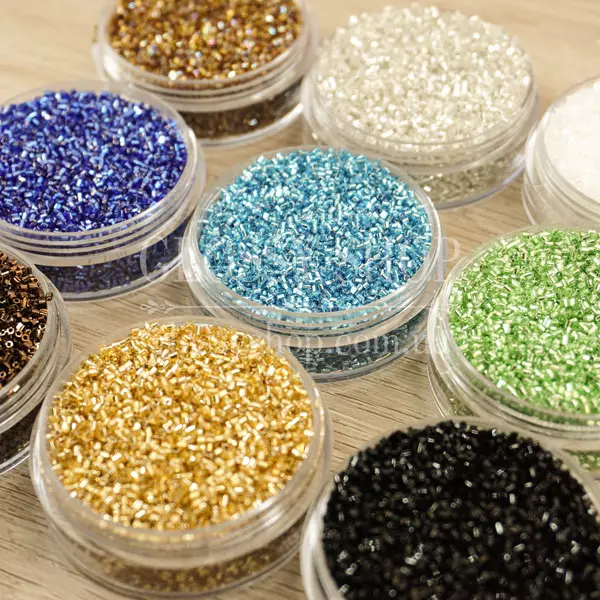
Disadvantages:
- high price;
- Different types of coatings have different degrees of resistance.
Japanese products are considered one of the most expensive: the bag weight is 5 g worth not less than 50 r., And often more expensive. Often the cost depends on the technology of manufacturing and the method of staining.
There are varieties with bronze, silver and even gold spraying.

Views
Needlewomen are often selected beads for weaving and embroidery in magnitude. In Japan, their own numbering is used to designate size. The numbers in the description of the goods denote the number of beery, which fit on a small segment, that is, 15/0 or 11/0 is the number of beads lying on the same line. The more details fit in the gap, the smaller the bead. In the sachet weighing 5 g, they contain about 500 pcs.
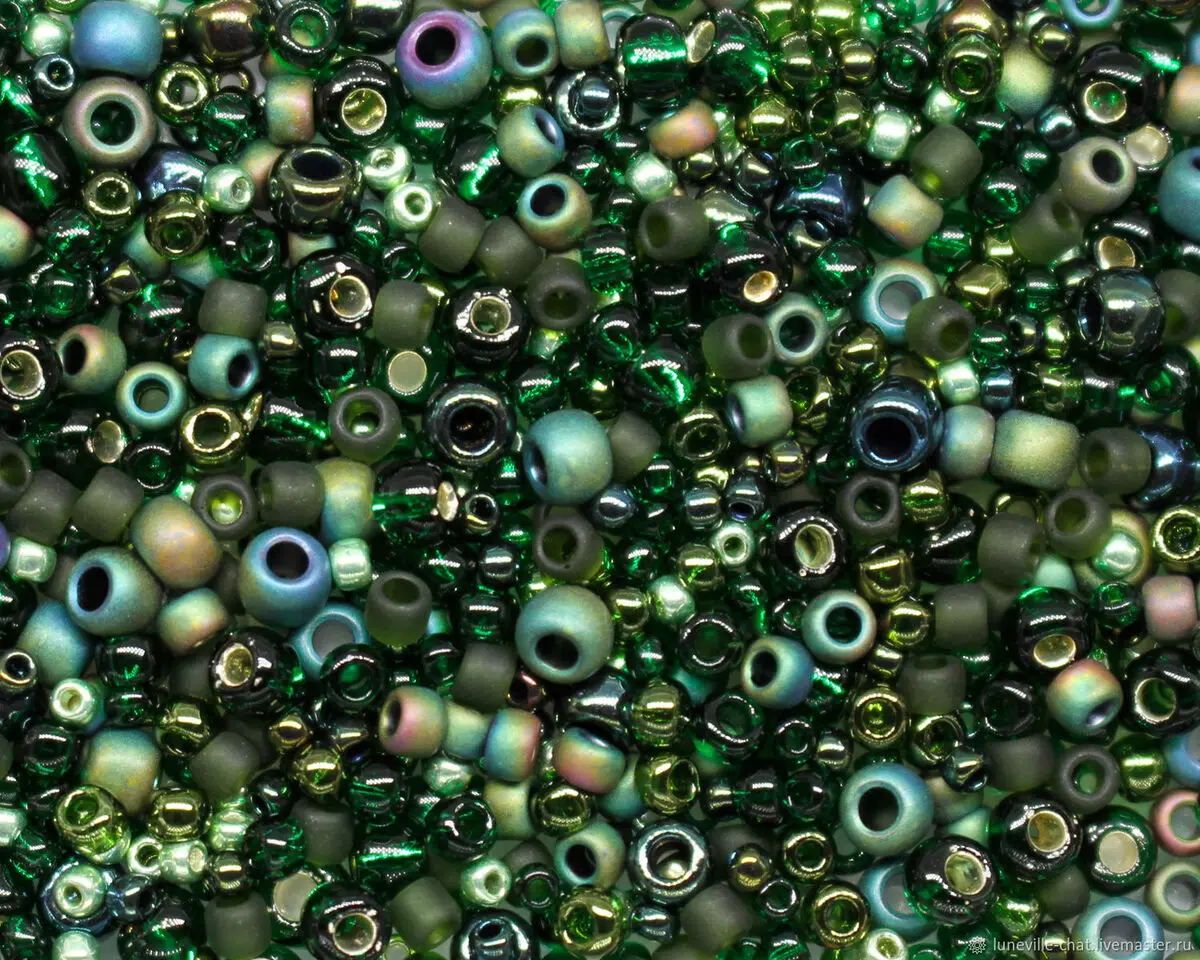
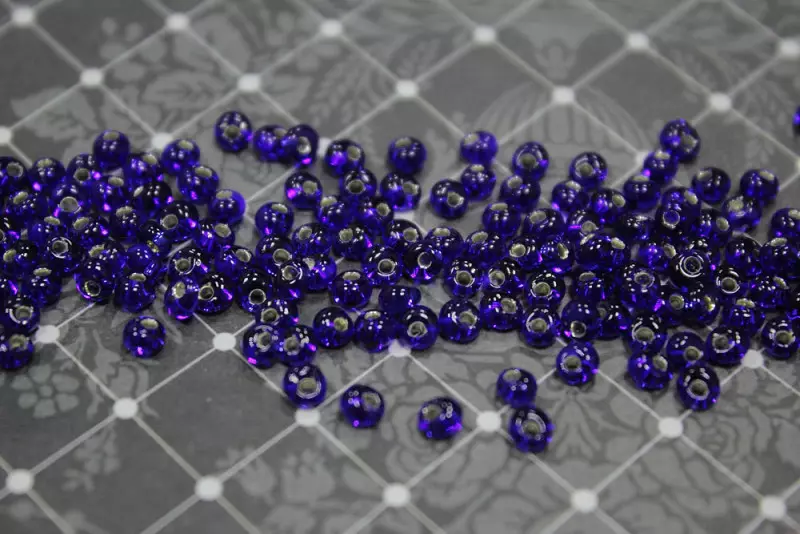
Dimensions in mm:
- 15/0 - 1.5;
- 11/0 - 2.2;
- 8/0 - 3.0;
- 6/0 - 4.0;
- 3/0 - 5.5.
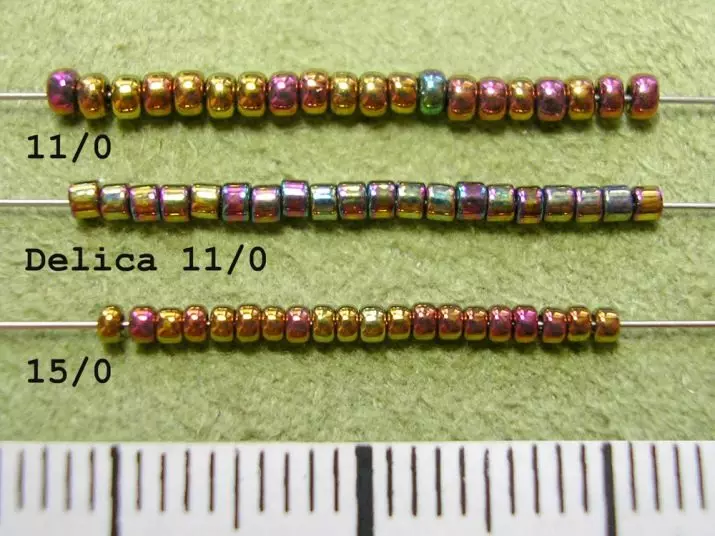
Types of Japanese beads differ in shape.
- Round (Roykal) - Most often occurs in needlework, it is used for the soiling of large textures, rivoli, knitting harnesses. There is an option to Takumi - externally resembles a barrel.
- Charlotte - Round variety with one facet, the sun plays glare on the sun.
- Cylindrical (Delica) - Extended, with the finest walls and a huge hole. It turns out an even dense cloth with a mosaic and brick weaving.
- Triangular - It has 3 faces to create a deeper and bulk texture.
- Cubic - It has 4 faces, is like creating a convex texture.
- Hexagon - There are 6 angles and 6 faces, helps to create convex surfaces playing with shades of color and light. Hexagon is also a six-sided species with rounded, evenly smoothed edges.
- magatama - in the form of flattened drops to a narrow edge of an opening. Used for finishing edges and produce a volume texture.
- long magatama - called on the above different elongated shape resembling a flower petal. It creates an interesting texture scaly needles or broad effect, suitable for edging.
- Glass - a hollow tube made of glass. Is rounded and faceted, have twisted faces. Used in sewing and finishing in a twisted fringe.
- Cutting - a chopped glass beads no longer than 5 mm, suitable for weaving geometric shapes and plaits. It creates a perfectly smooth surface.
- Drops - teardrop-shaped, with an offset hole. One side is wider and the other narrowed. voluminous ornaments created from it.
- Berry Beads - it has outlines beans, it is used for the convex bracelets, shapes, and when knitting bundles lariat in ndebele art.
- Tila - a flattened square with two holes for volume and flat embroidery and beading on a special machine.
- Mixes - complete collected beads of different forms harmonious gamut introduce unpredictability in the creative process in the weaving original jewelry.
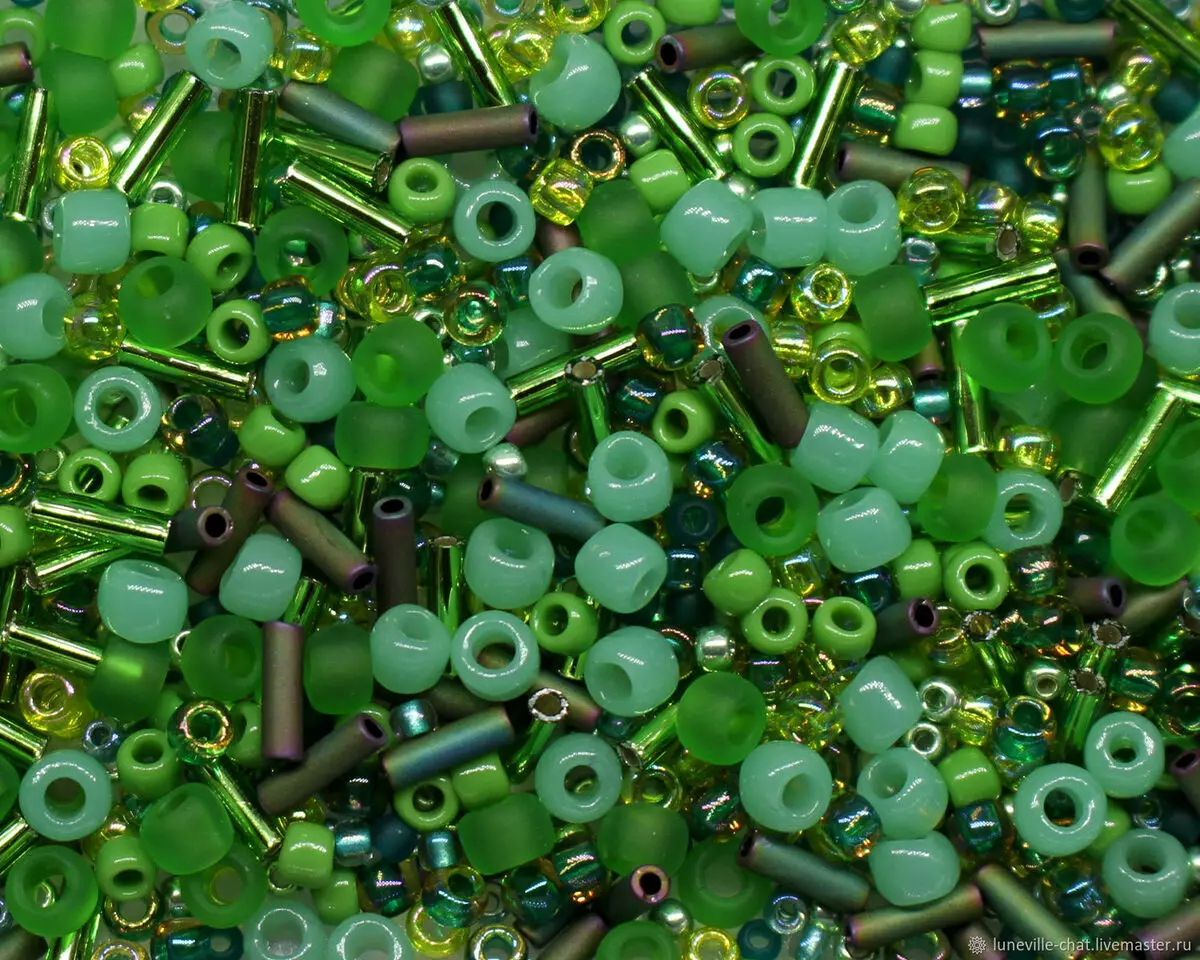
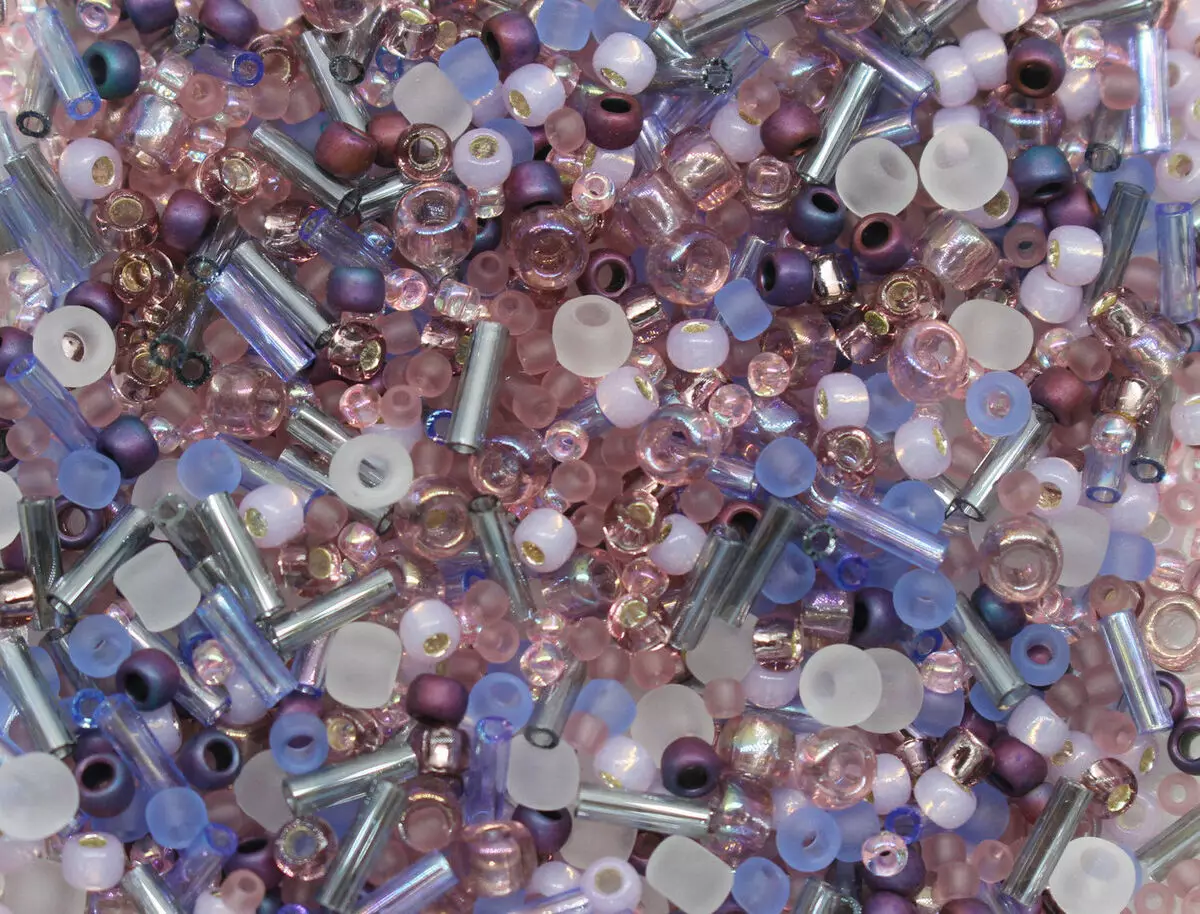
By design and method can allocate several groups of the coating.
- Transparent - a transparent glass particles, easily transmitted light.
- Opaque - one-color stained glass, dense and opaque.
- Maty - the surface does not reflect light, reminiscent of frozen or overheated in the fire glass drops.
- Rainbow - shiny and opaque structure gives the play of color shades thanks to a special coating.
- Ceylon - pearl variety. Shining surface creates a pearl glow.
- Metallic - each bead coated with a thin layer of tin or copper. The thicker the layer, the darker the color becomes.
- Gold - cover the precious metal layer, then the titanium oxide, which makes it impossible luster. There are two options: metallic shine and - unlike in the thickness of the deposited layer.
- Colored - on transparent glass is applied different shades, then heated - are obtained as a result of the unique combination of the original. Sometimes the paint is sprayed only from the inside.
- Electroplating - special zinc layer that seals the color, protects against abrasion and scratches.
- Silvering - inside the hole applied silver pollen, transparent colored beads become bright reflections.
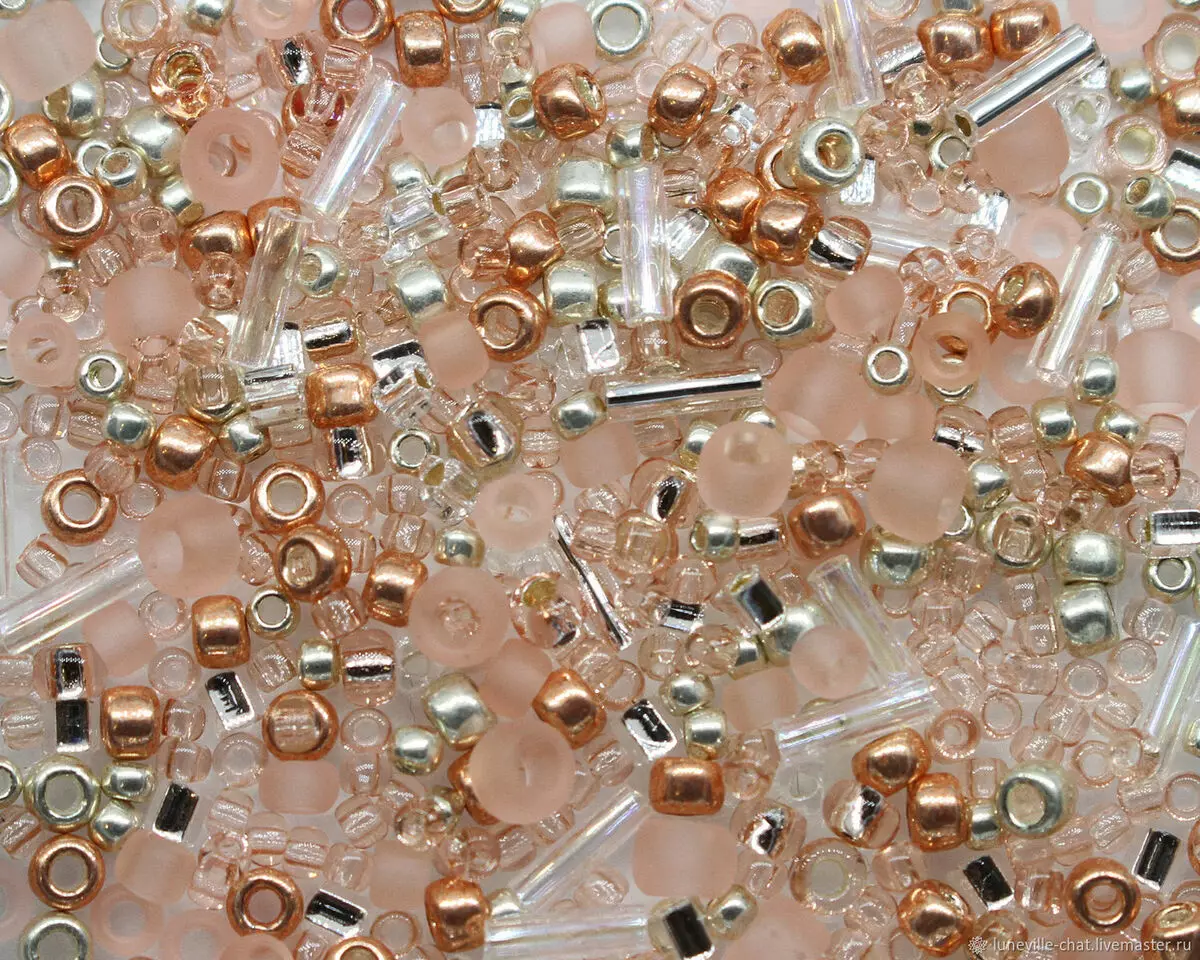
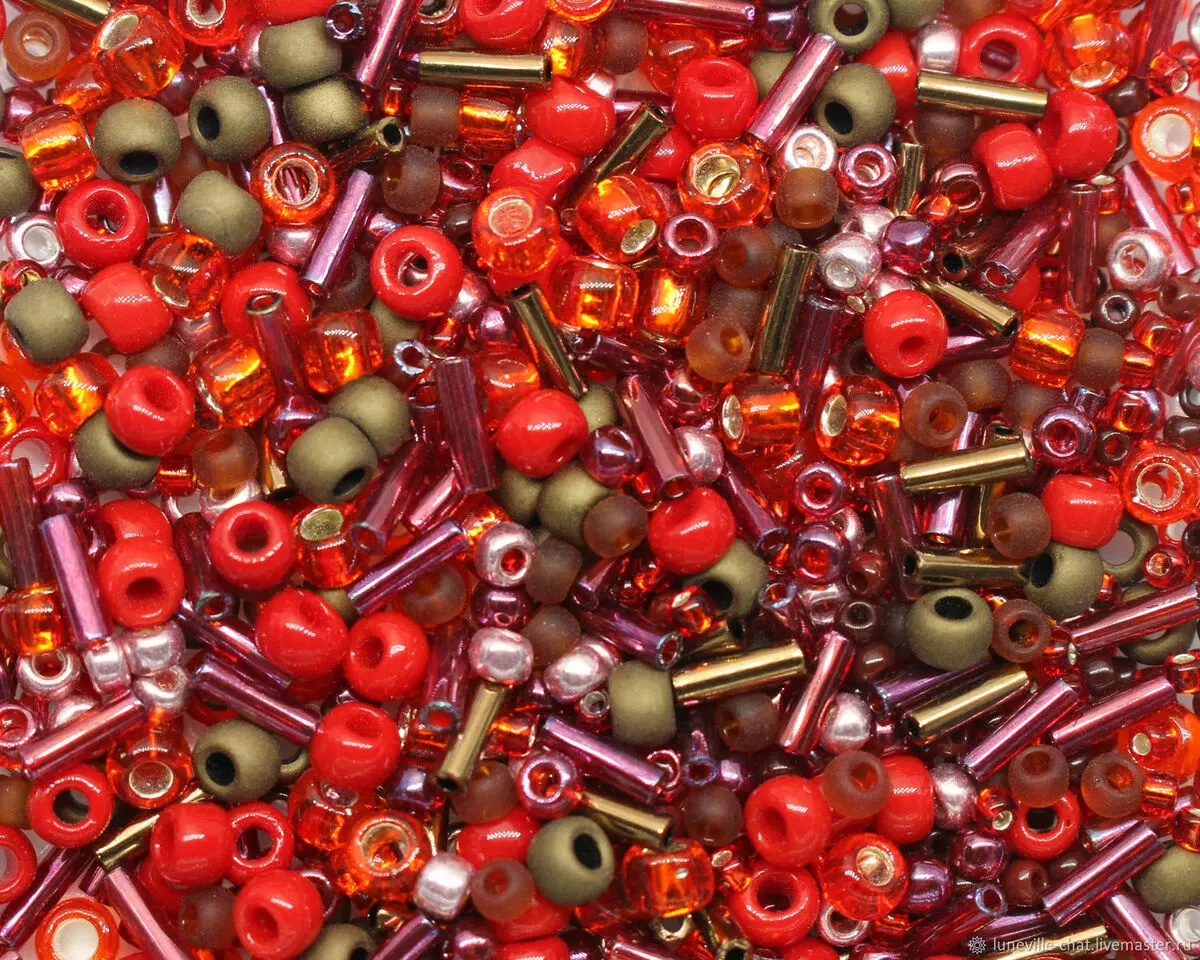
The bead color map of Japan have designations that indicate the resistance of each coating to environmental influences. The asterisk mark dimming from frequent friction and a square - not resistant to chemical substances, delta - not withstand direct sunlight. Black diamond marked by very resistant variant of spraying.
Popular manufacturers
Miyuki.
The company was founded in 1949, has several factories in Japan. It was she who released the new cylindrical version of the "Delica" in 1982. Produces products from different shapes, sizes and colors.
There is own patented electroplating spraying, this company is distinguished by a high degree of resistance. Unique varieties: Delica, Long Magatama, Tila.

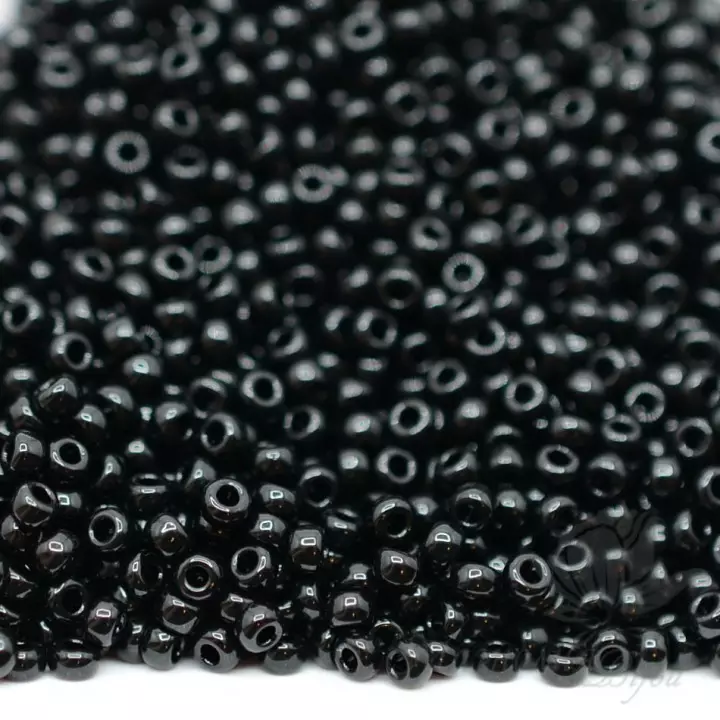
Toho.
The brand was founded in 1957. Releases a product from high-quality glass, which for transparency resembles a candy caramel. Offers traditional beads: round, cylindrical hexagon.
The choice of colors is diverse: there is with a metal and gold coating, a botanical series in muted pastel shades, painted by manually, was released. Unique varieties: Aiko, Charlotte.
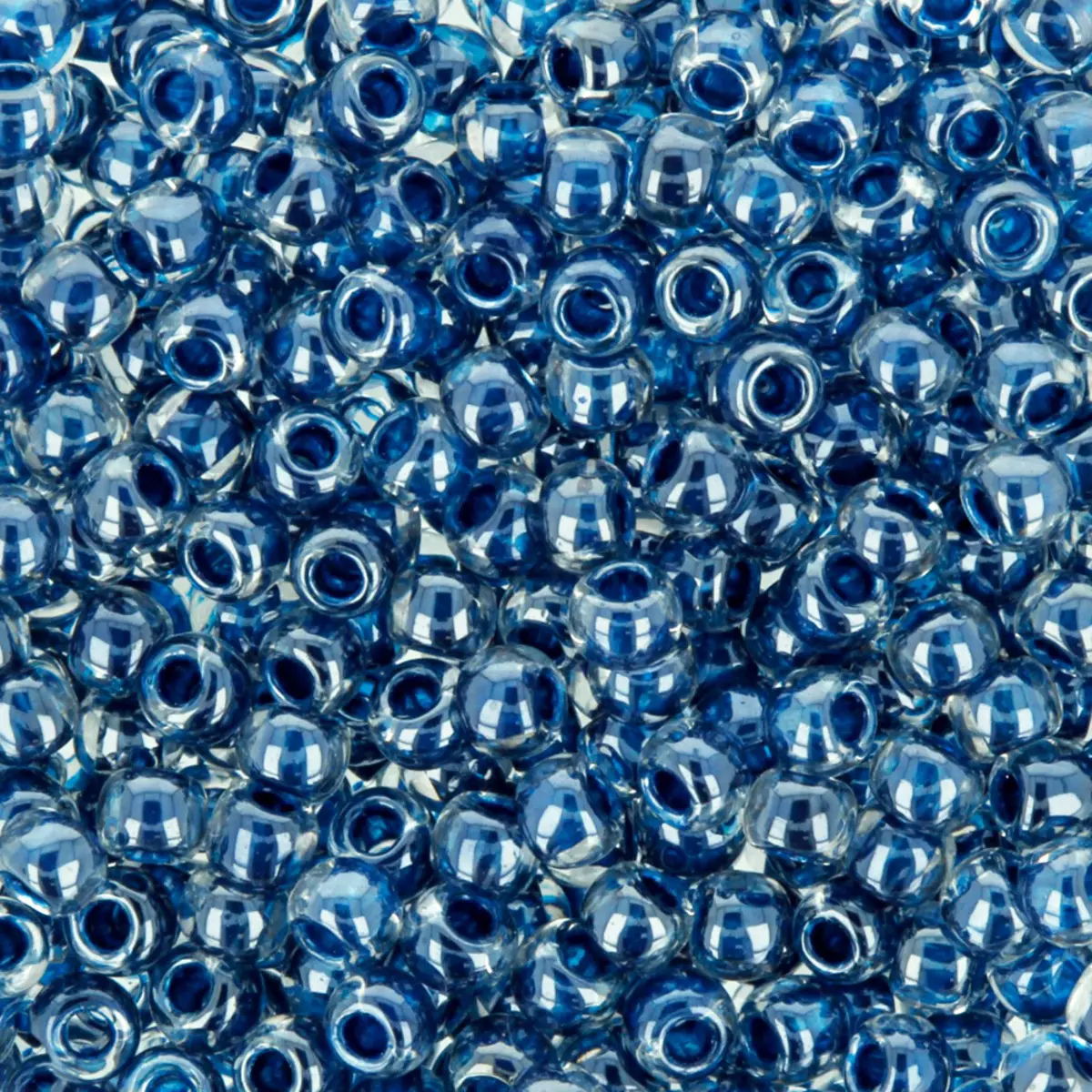
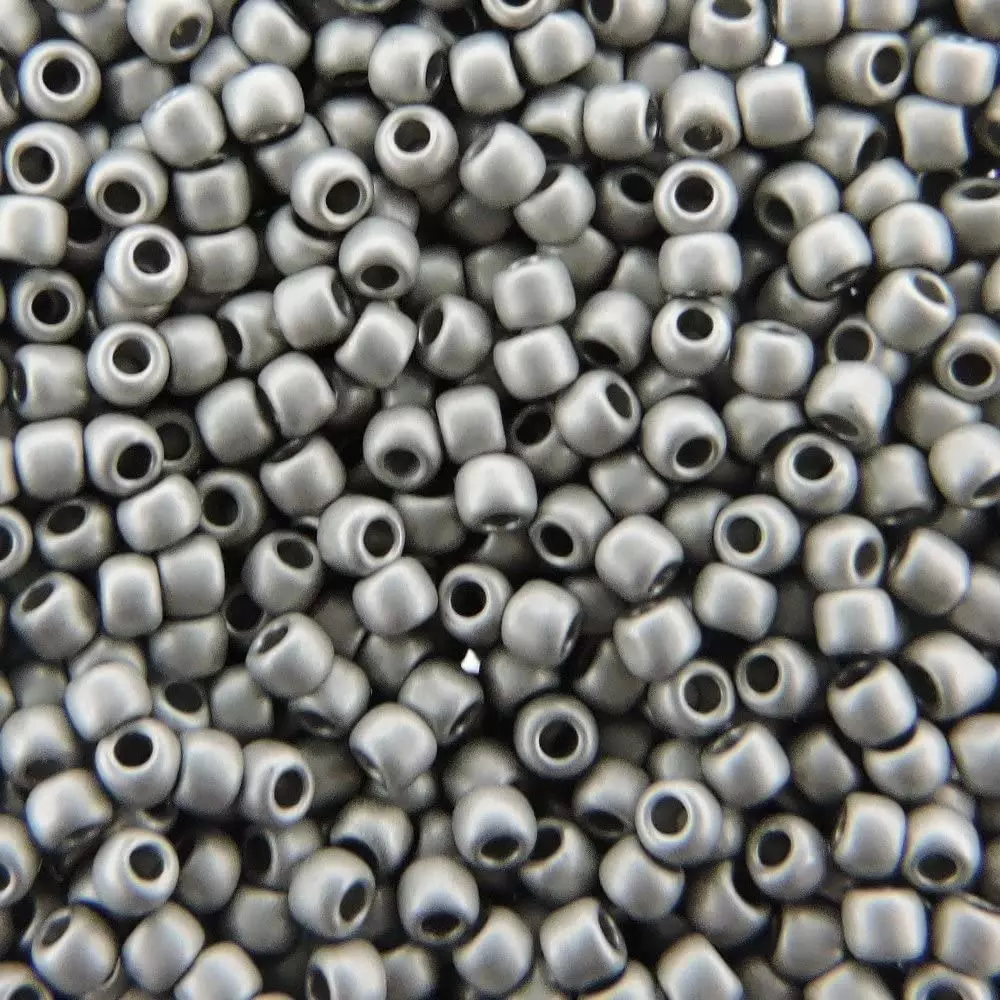
Matsuno.
The company was founded in 1935. The products of this brand first appeared in our country, is considered the most affordable. The brand produces a variety of beads in shape and rich in palette.
In the range there are few contrast colors and a lot of overflow options. Separate covers are considered not very resistant.
